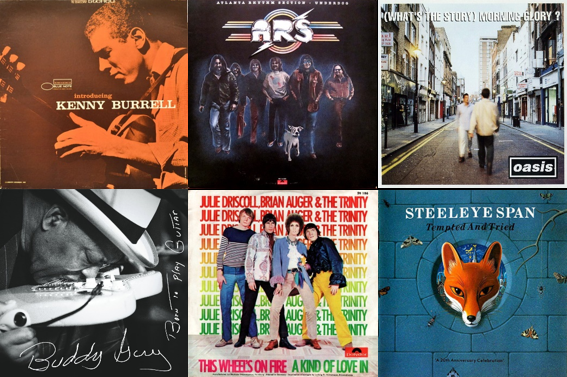Happy Friday and welcome to the second installment of Chris & Max pick. Essentially, this is picking up a song series fellow blogger Max from PowerPop initially started in June 2023 with the year 1955 and ended last month with 1995. The idea of this continuation is to close the gap between 1995 and 2024.
Last week, we looked at 1996. This time, the year is 1997. I realize this post is coming earlier than anticipated. Given my other recurring features, I’m a bit reluctant to commit to yet another weekly post. That’s why I still believe an every-other-week schedule is more sustainable, but I guess we’ll see how it goes!
Big Head Todd and the Monsters/Resignation Superman
Kicking off the picks for 1997 are Big Head Todd and the Monsters, a Colorado rock band formed in 1986, who I only “discovered” earlier this year. Resignation Superman, penned by the group’s co-founder, main lyricist, singer and guitarist Todd Park Mohr, is from their fifth studio album Beautiful World, which appeared in February 1997.
Radiohead/Paranoid Android
In May 1997, British alternative rock band Radiohead released their third studio album OK Computer. I still find it hard to believe I essentially missed it at the time it came out. Paranoid Android, which like all other tracks on the album was credited to the entire group, became the lead single and one of their biggest hits. Founded in 1985, Radiohead still have their original line-up: Thom Yorke (vocals, guitar, piano, keyboards), Jonny Greenwood (guitar, keyboards, ondes Martenot, orchestral arrangements), Ed O’Brien (guitar, effects, backing vocals), Colin Greenwood (bass) and Philip Selway (drums, percussion).
Sarah McLachlan/Angel
Next up is one of the most stunning pop ballads I know: Angel by Canadian singer-songwriter Sarah McLachlan. The inspiration for the song came from press accounts McLachlan had read about musicians getting into heroin to escape the pressures of the cutthroat music business. The intense ballad was the fourth single off her fourth studio album Surfacing, which came out in July 1997.
Oasis/All Around the World
Moving on to another British group who were pretty popular at the time: Manchester Brit pop rockers Oasis became an instant sensation in the UK when their August 1994 debut album Definitely Maybe topped the charts there. By the time their third album Be Here Now dropped in August 1997, their enormous popularity had spread to many other countries. Here’s the catchy All Around the World, which also became the third single. Like all other tracks on the album, it was written by Noel Gallagher.
The Verve/Bittersweet Symphony
Here’s yet another British group who hit it really big in 1997: The Verve and Bittersweet Symphony, Max’s pick. Their biggest international hit single, written by frontman and lead vocalist Richard Ashcroft, also helped propel September 1997’s Urban Hymns to become their best-selling album. But all that success was bittersweet. After a lawsuit found The Verve illegally had taken a sample from a 1965 version of The Rolling Stones’ The Last Time by The Andrew Oldham Orchestra, all royalties were relinquished, and Mick Jagger and Keith Richards were added to the songwriting credits. In 2019, following the death of Allen Klein, the Stones’ manager at the time of the litigation, Jagger and Richards ceded the rights to Ashcroft.
Bob Dylan/Not Dark Yet
Wrapping up this post is a great song by Bob Dylan from Time Out of Mind. Many fans and critics regard the maestro’s 30th studio album, released in September 1997, as an artistic comeback. It also marked Dylan’s first with original material in seven years since September 1990’s Under the Red Sky. Here’s Not Dark Yet, a gem as far as I’m concerned!
Sources: Wikipedia; Acclaimed Music; YouTube; Spotify










